Are you interested in becoming a master at growing cannabis indoors? Whether you are a seasoned grower looking to enhance your techniques or a beginner eager to learn, this article is for you.
Mastering indoor cannabis growing techniques can be a rewarding and fulfilling endeavor, allowing you to cultivate high-quality cannabis in the comfort of your own home.
In this article, we will guide you through the essential steps to success, from choosing the right strain to implementing proper lighting techniques, nutrient management, and harvesting and curing techniques.
To begin your journey to becoming a master indoor cannabis grower, the first step is choosing the right strain. With countless options available, selecting a strain that suits your preferences and growing conditions is crucial.
We will explore various factors, such as the plant’s growth characteristics, flowering time, and cannabinoid profile.
We will create the ideal growing environment once you have chosen the perfect strain. From temperature and humidity control to ventilation and air circulation, we will provide you with the knowledge and tips to create optimal conditions for your plants to thrive.
So, get ready to dive into the world of indoor cannabis growing and unlock the secrets to mastering this art.
Key Takeaways
- Choose the right strain based on growth characteristics, flowering time, and cannabinoid profile.
- Create the ideal growing environment with temperature and humidity control, proper ventilation, and appropriate lighting.
- Properly manage nutrients and follow a feeding schedule for optimal plant nutrition.
- Harvest and cure buds using techniques such as cutting and drying in specific temperature and humidity levels, and curing in airtight containers for at least two to four weeks.
Choosing the Right Strain
When it comes to choosing the right strain, it’s all about finding the perfect balance between potency and ease of growth for your indoor cannabis garden.
You want a strain to give you the desired effects: relaxation, pain relief, or a creativity boost. At the same time, you also want a relatively easy strain to grow indoors, especially if you’re a beginner.
Some strains are naturally more resilient and adaptable to indoor growing conditions, making them an excellent choice for beginners. These strains are often Indica-dominant, which means they tend to be shorter and bushier, making them easier to manage in a confined space.
On the other hand, sativa-dominant strains can grow taller and require more space and maintenance.
Another factor to consider is the flowering time of the strain. If you have limited space and time, you may want to choose a strain with a shorter flowering time. This way, you can harvest your plants sooner and make room for new ones. However, if you have more space and time to spare, you can opt for strains with longer flowering times, which often result in higher yields and more potent buds.
The key is researching and finding a strain that fits your needs and preferences. Consider factors such as potency, ease of growth, genetics, and flowering time to ensure a successful indoor cannabis garden.
With the right strain, you’ll be well on your way to mastering the art of indoor cannabis growing.
Creating the Ideal Growing Environment
To create the perfect environment for your cannabis plants, you want your growing space to be as welcoming as a cozy home on a cold winter’s night. The first step is to control the temperature and humidity levels.
Cannabis plants thrive in temperatures between 70 and 85 degrees Fahrenheit during the day and slightly cooler temperatures at night. Invest in a reliable thermometer and a humidifier to ensure optimal plant growth conditions.
Also, proper ventilation is crucial to prevent stale air buildup and promote healthy air circulation. Installing fans and vents to keep the air fresh and avoid any stagnant pockets of air that could lead to mold or other issues.
Lighting is another vital aspect of creating the ideal growing environment for your cannabis plants. Choose the correct type of light, such as high-intensity discharge (HID) lamps or light-emitting diodes (LEDs), that provide the necessary light spectrum for each growth stage.
During the vegetative stage, your plants will require blue light; during the flowering stage, they will need more red light. Keeping the lights at the proper distance from the plants is important to avoid burning them or causing light stress.
Consider using timers to ensure your plants receive the proper amount of light daily, as consistency is key for their overall health and development.
By maintaining the right temperature, humidity, and light levels, you can create an ideal growing environment that will maximize the potential of your cannabis plants.
Implementing Proper Lighting Techniques
Implementing proper lighting techniques involves creating an environment that mimics natural sunlight to maximize cannabis plant growth. One of the critical aspects of appropriate lighting is providing the right spectrum of light for each stage of the plant’s growth.
During the vegetative stage, plants require more blue light, which promotes leaf and stem growth. This can be achieved by using cool white fluorescent or metal halide lights.
On the other hand, during the flowering stage, plants need more red light to encourage the development of buds. This can be achieved by switching to high-pressure sodium lights or LED grow lights with a red spectrum.
In addition to the right spectrum, providing the right light intensity is crucial. Cannabis plants require around 20-40 watts of light per square foot during the vegetative stage and about 40-60 watts per square foot during the flowering stage.
It is important to adjust the height of the lights accordingly to ensure the plants receive the optimal amount of light without causing heat stress or light burn. Using reflectors or reflective materials around the growing area can also help to maximize the light intensity by redirecting the light toward the plants.
Overall, implementing proper lighting techniques is essential for successful indoor cannabis growing. By mimicking natural sunlight and providing the right spectrum and intensity of light, you can ensure that your plants receive the optimal conditions for growth and maximize their potential yield.
Nutrient Management and Feeding Schedule
As you delve into cultivating your indoor garden, it’s crucial to understand the intricate dance between nutrient management and the feeding schedule. Providing your cannabis plants with the right balance of nutrients is essential for their growth and development. You must ensure they receive all the necessary elements, such as nitrogen, phosphorus, and potassium, in the right amounts and at the correct times.
One of the key factors in nutrient management is maintaining a proper feeding schedule. This involves determining the frequency and quantity of nutrient solutions for your plants. It’s important to strike a balance between underfeeding and overfeeding. Underfeeding can result in nutrient deficiencies and stunted growth; overfeeding can lead to nutrient burn and other problems.
Following a feeding schedule, you can ensure that your plants receive a consistent supply of nutrients without overwhelming them.
In addition to the feeding schedule, you must consider the type of nutrients you use. Various nutrient solutions are available on the market, each with its composition and purpose. It’s crucial to choose a nutrient solution that is specifically formulated for cannabis plants and meets their unique needs at each stage of growth. This will help you optimize the health and productivity of your plants.
Harvesting and Curing Techniques
Once you’ve carefully nurtured your plants to their full potential, it’s time to start the rewarding process of harvesting and curing. You’ve been waiting for this moment when all your hard work pays off.
Here are three essential techniques to ensure you achieve the highest quality cannabis:
- Timing is everything: Harvesting your cannabis at the right time is crucial for achieving the desired potency and flavor. You want to wait until the trichomes, the tiny resin glands on the buds, have turned from clear to milky white or amber. This indicates that the THC levels are at their peak. Harvesting too early can result in less potent buds, while harvesting too late may lead to a more soothing effect. Keep a close eye on the trichomes and harvest when they prime.
- Proper drying and curing: After harvesting, it’s important to dry your cannabis properly to remove excess moisture. Hang the trimmed buds upside down in a dark, well-ventilated area with a temperature of around 60-70°F and a humidity level of 45-55%. This process can take anywhere from 7 to 14 days, depending on the size of the buds. Once the buds are dry, it’s time to cure them. Place the dried buds in airtight containers, such as glass jars, and store them in a cool, dark place. Open the jars daily for the first week to release excess moisture and gradually reduce the frequency over the following weeks. Proper drying and curing will enhance the flavor, aroma, and overall smoking experience.
- Patience is key: It can be tempting to sample your freshly harvested cannabis right away, but patience is essential for achieving the best results. Curing your buds for at least two to four weeks allows the flavors to develop fully and the harshness of the smoke to mellow out. The longer you heal, the smoother and more flavorful your cannabis will become. It may be difficult to resist the temptation, but trust the process and give your buds the time they need to reach their full potential.
By following these harvesting and curing techniques, you can ensure that your indoor cannabis cultivation journey ends on a high note. Enjoy the fruits of your labor and savor the rich flavors, potent effects, and overall satisfaction that come with mastering the art of indoor cannabis growing.
Note: Discover premier cannabis brands in North America through Leafy Mate. Explore a curated selection of trusted products. Join us to access high-quality cannabis offerings. Unlock a world of premium choices and connect with top brands. Experience excellence with Leafy Mate’s network of renowned cannabis options across North America.
Frequently Asked Questions
How can I prevent pests and diseases from affecting my indoor cannabis plants?
To prevent pests and diseases from harming your indoor cannabis plants, employ a two-pronged approach. Regularly inspect plants for signs of pests and use organic pest control methods. Maintain a clean and sanitized environment to minimize disease risks.
What are some common mistakes to avoid when growing cannabis indoors?
When growing cannabis indoors, some common mistakes to avoid are overwatering, using the wrong lighting, neglecting proper ventilation, not monitoring pH levels, and overcrowding plants.
How do I determine the ideal temperature and humidity levels for my indoor cannabis grow?
To determine ideal temperature and humidity levels for your indoor cannabis grow, monitor the plants closely. Generally, aim for a temperature range of 70-85°F and a humidity range of 40-60%. Adjust accordingly based on plant health and growth stage.
What are some effective methods for controlling odor in an indoor cannabis grow room?
To control odor in your indoor cannabis grow room, try these effective methods: use carbon filters to trap smell, ventilate the room properly, use odor-neutralizing sprays, and consider growing odorless strains. Keep your grow room smelling fresh and discreet.
Hi there! I’m Ayesha, a writer who loves creating stories that connect with people. I enjoy learning about health and wellness and sharing what I find on my blogs at Leafy Mate. My blogs are like taking a trip through the newest discoveries and timeless wisdom about staying healthy and feeling good. Join me on this adventure, where I explore and share simple ways to live a better, more nourishing life.

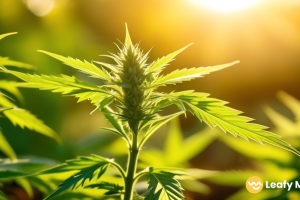
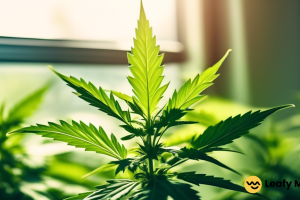
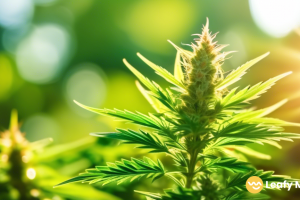




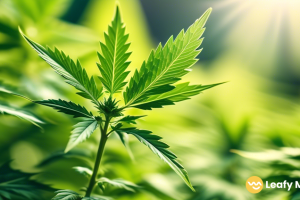
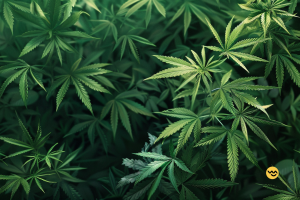
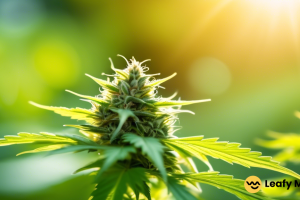
Leave a Reply